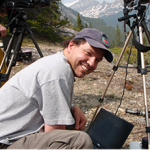Wildfires and other forms of landscape burning turn solid material held in vegetation and organic soil into a complex mix of airborne gases and particulates. When conducted over large areas and/or in extreme fires, this rapid process can result in massive atmospheric impacts, perhaps most particularly on air quality (AQ). Landscape fires of this sort are thus responsible for severe AQ episodes, including some of the world’s worst events that likely impact the health of millions. Furthermore, in many regions of the developing world recurrent burning of agricultural waste over huge areas of croplands leads to air pollution episodes that routinely affect the air that hundreds of millions of people breath, including in some of the largest mega-cities on Earth. However, it can be hard to disentangle the contribution landscape fires make to the poor air quality of these areas because many of the areas affected suffer from a paucity of in situ atmospheric measurements for example. Regional AQ modelling can deploy state-of-the-art information on different emissions sources, including landscape fires and agricultural burning, to address these and other related questions, ultimately informing studies of human health and also potentially agricultural policy development related to changing patterns and timing of cropping. Other uses of such modelling include the study of the radiative effects of the short-lived climate impactors (SLCPs) and to support the evaluation and validation of new fire emissions estimates coming from Earth Observation – which are extremely difficult to validate directly or through other means but which when placed within a regional AQ model can provide metrics such as aerosol optical depth timeseries that can be compared to high accuracy in situ data.
Project duration: 2021-2025








